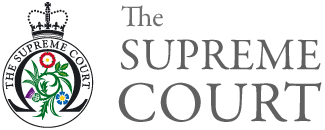Papers for the appeal hearing
Contents
General note
5.1.1 The Supreme Court is moving to a system under which the vast majority of the documents filed are to be provided in electronic form only. The original and one hard copy of key documents such as the statement of facts and issues may be requested for the court record. It is essential that duplication of material is avoided particularly where two or more appeals are heard together(1).
5.1.2 See Practice Direction 6 for core volumes, cases and the authorities.
5.1.3 The statement of facts and issues must be a single document, drafted initially by the appellant but "submitted to, and agreed with, every respondent before being filed": rule 22(2). The statement must set out the relevant facts and, if the parties cannot agree as to any matter, the statement should make clear what items are disputed. It is usually helpful for it to contain a chronology with a list of the key dates. This should be set out in an annex and include cross-references to the page numbers of any relevant documents in the appendix. The statement should contain references to every law report of the proceedings below, and should state the duration of the proceedings below. It should be signed by counsel for all parties. The statement of facts and issues is a neutral document and is not to be used to argue a party's case. It is the professional duty of the parties' legal representatives to co-operate to produce the statement (2).
5.1.4 The appendix should contain only such material as is necessary for understanding the legal issues and the argument to be presented to the Supreme Court (see rule 22(2)). It should not contain documents which were not in evidence below, nor should it contain transcripts of the proceedings or evidence below unless they are essential to the legal argument. If necessary, the appendix should be prepared in several parts, only the most essential documents being included in Part 1; only Part 1 will be included in the core volumes. The appendix must be submitted to, and agreed with, every respondent before being filed: rule 22(2).
5.1.5 Documents must be included in the appendix in the following order -
- the order appealed against;
- if separate from the order at (a) above, the order refusing permission to appeal to the Supreme Court;
- the official transcript of the judgment of the court below (3);
- the final order(s) of all other courts below;
- the official transcript of the final judgment(s) of all other courts below;
- (where they are necessary for understanding the legal issues and the argument) the relevant documents filed in the courts below;
- (where they are necessary for understanding the legal issues and the argument) the relevant documents and correspondence relating to the appeal.
All documents must be numbered, and each part of the Appendix must include a list of its contents.
Time limits
5.2.1 The statement of facts and issues and the appendix must be filed by the appellant within 112 days after the filing of the notice under rule 18(1)(c) or the filing of the notice of appeal: rule 22(1). Where the parties have agreed a timetable for the filing of documents in an appeal, the Registrar should be informed and that timetable will be approved unless it will prejudice the hearing date or adversely affect the preparation time the Justices require(4).
5.2.2 If the appellant is unable to comply with the relevant time limit, an application for an extension of time must be made. (See rule 5 and paragraph 5.2.3.)
Extensions of time for filing the statement of facts and issues and the appendix
5.2.3 Appellants who are unable to complete preparation of the statement and appendix within the time limit may apply to the Registrar for an extension of that time under rule 5. Any application must be made in the general form of application, Form 2, (see Annex 1 to Practice Direction 7) and should explain the reason(s) why an extension is needed.
5.2.4 The Registrar may grant an application for an extension of time, provided that it does not prejudice the preparation for the hearing or its proposed date. The time limits provided by the Rules are, however, generous and applicants for an extension of time must set out in some detail why they are unable to comply with any relevant time limit.
Respondents' consent
5.2.5 Respondents are expected not to withhold unreasonably their consent to an application for an extension of time. Appellants are advised to communicate the views of respondents to the Registry since, if they raise no objection, the application may be dealt with on paper.
Filing the Statement and Appendix
5.2.6 When the statement and appendix are ready, the statement and Part 1 of the appendix must be filed (in electronic form)(5) at the Registry.
5.2.7 Within 7 days after filing the statement and the appendix, the parties must comply with rule 22(3) by notifying the Registrar that the appeal is ready to list and providing a time estimate (see paragraph 6.2.1 of Practice Direction 6).
Footnotes
- Amended Oct 2020 Return to footnote 1
- Amended Sep 2016 Return to footnote 2
- If the judgment has been published in a report which is ordinarily received in court, copies of the report may be filed instead of transcripts Transcripts of judgments marked "in draft" are not accepted without certification by the relevant court that the copy is the final version of the judgment. Return to footnote 5
- Amended Oct 2020 Return to footnote 4
- Amended Oct 2020 Return to footnote 5
- Amended Oct 2020 Return to footnote 6
